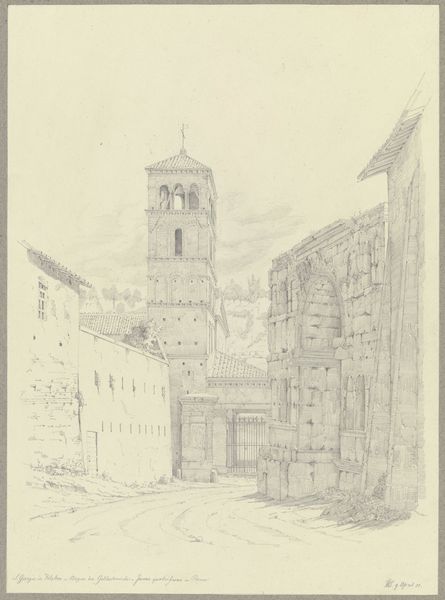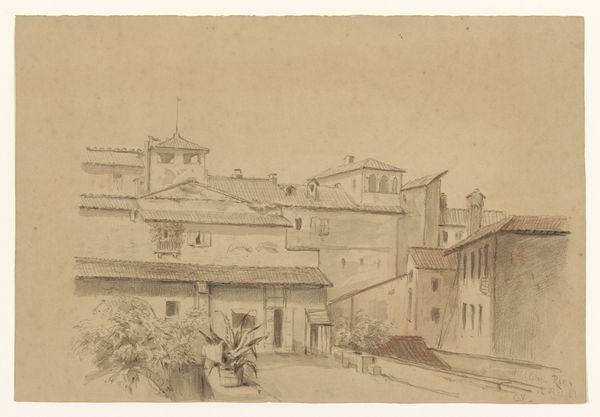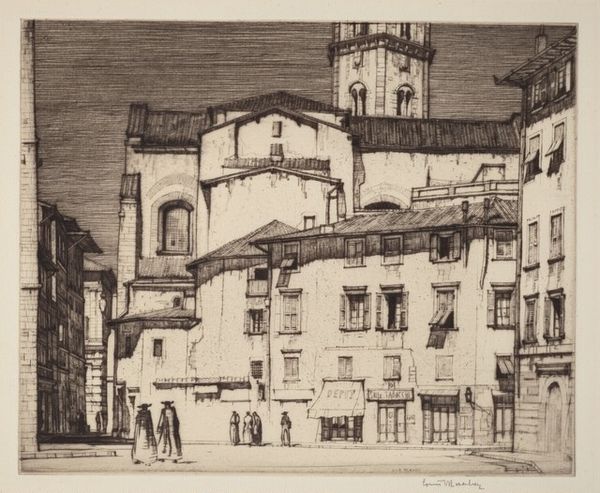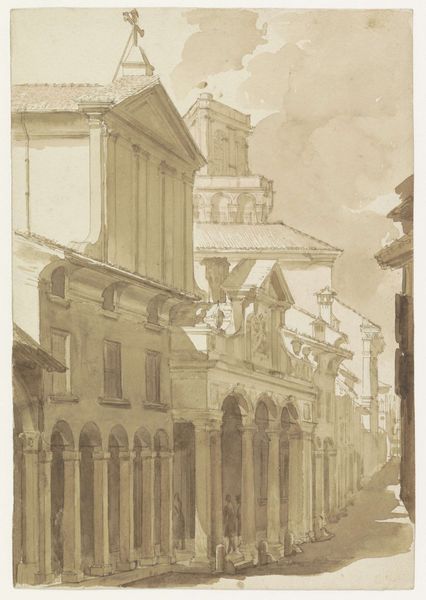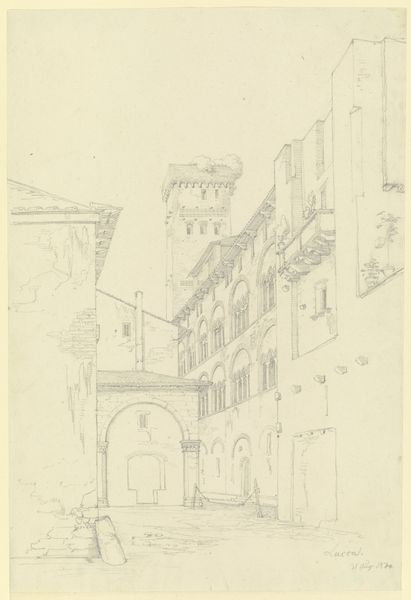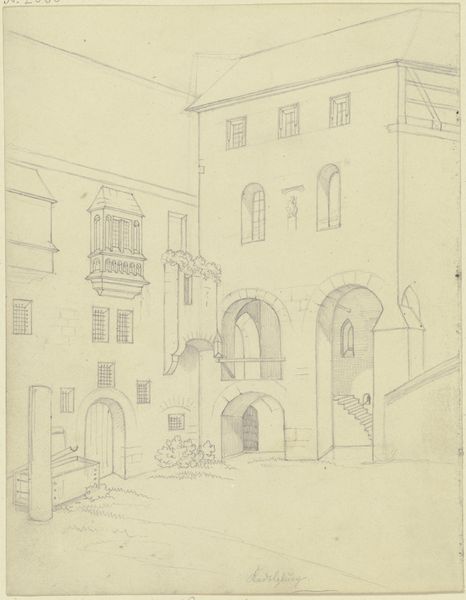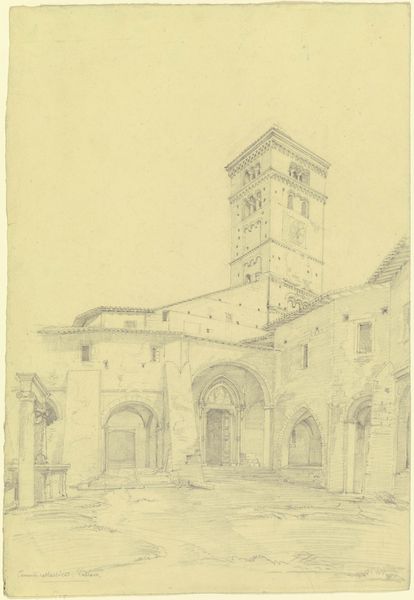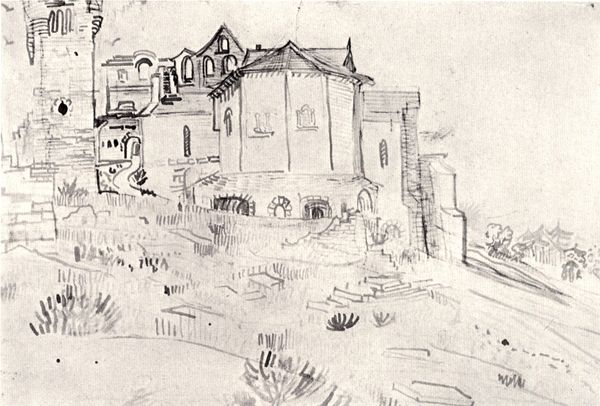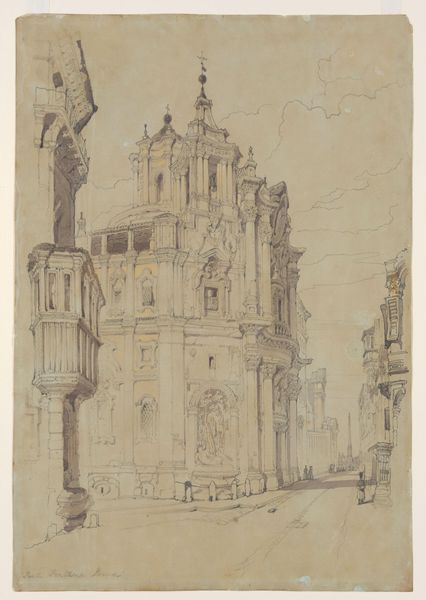
drawing, paper, ink, architecture
#
drawing
#
landscape
#
paper
#
ink
#
cityscape
#
architecture
Copyright: Public Domain
Curator: Here we have Hermann Lismann’s 1924 drawing, “Die Porta Valbona in Urbino,” rendered in ink on paper and currently residing here at the Städel Museum. What strikes you initially? Editor: The composition! It’s like peering up at power. That imposing gate, looming over us in monochrome, and behind it the ascending architecture – all heavy with a kind of… authority. Curator: Indeed. The Valbona Gate itself is steeped in history, one of the original entry points into Urbino. You see the imposing structures behind the gate—they evoke the city’s historical significance as a cultural and political center during the Renaissance. Editor: This reminds me how physical spaces, especially those marked by power like city gates, become stages for the enactment of social control. And here we are in 1924—the shadow of rising Fascism in Italy is long, perhaps reflected in this dominating perspective. Curator: Lismann captures the weight of Urbino’s architectural heritage, though. Notice the confident lines and the dramatic use of light and shadow—characteristic of a cityscape study meant to distill something timeless from a specific locale. It also depicts how city spaces, once vibrant, evolve into monumental representations of control. Editor: Right. It prompts questions about who controlled the narratives surrounding historical landmarks. Is the monumental architecture a celebration of the past, or does it serve as a stark reminder of socio-political control that such architectural statements communicate? The way the street slopes into the dark opening of the gate—inviting, yet shadowed. I read it as more forbidding. Curator: Your point about narrative is key. Works such as this shape our perceptions of place, history and power structures. Considering such art from the 1920's within broader social anxieties highlights its impact and function. Editor: Ultimately, "Die Porta Valbona in Urbino” doesn't simply portray a cityscape; it encourages us to consider the power imbued within built environments and the cultural narratives that accompany it. It’s a case of art reminding us to see history as contested. Curator: Precisely. Lismann invites a critical perspective on how spaces become symbols. Editor: Yes—a vital prompt to keep questioning the world around us.
Comments
No comments
Be the first to comment and join the conversation on the ultimate creative platform.
